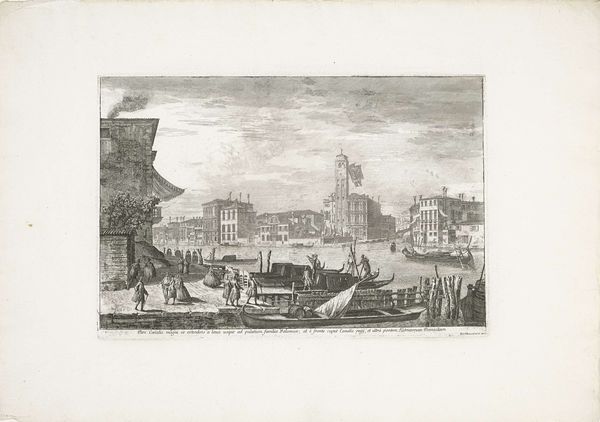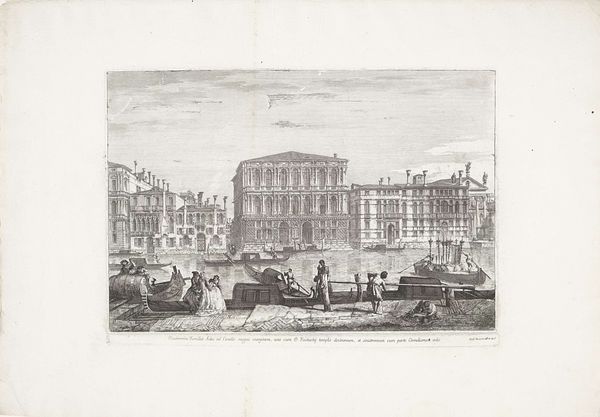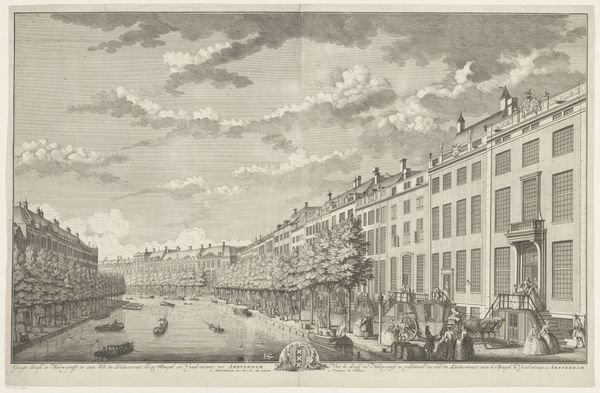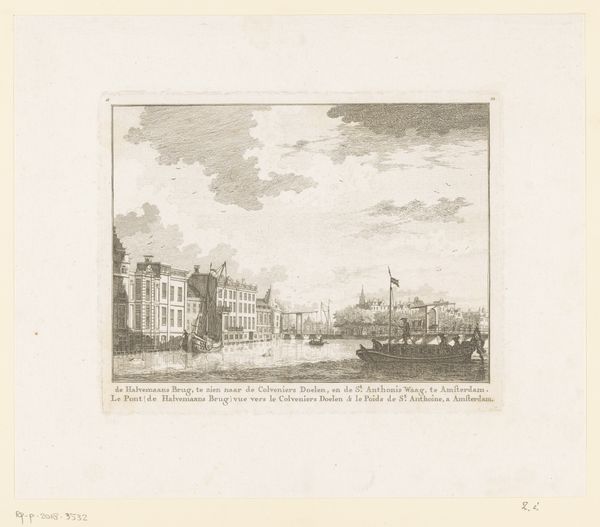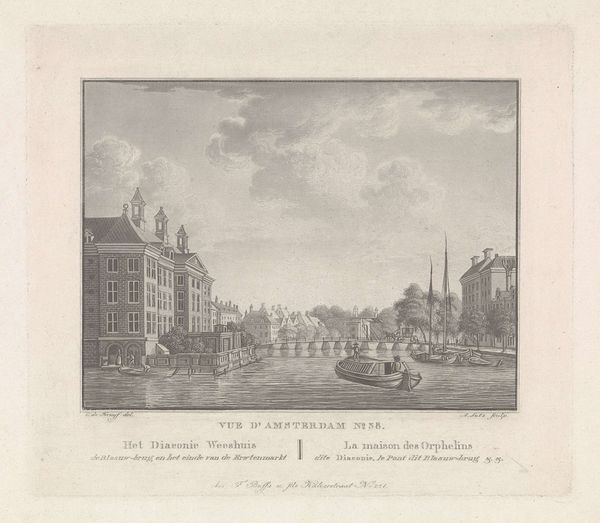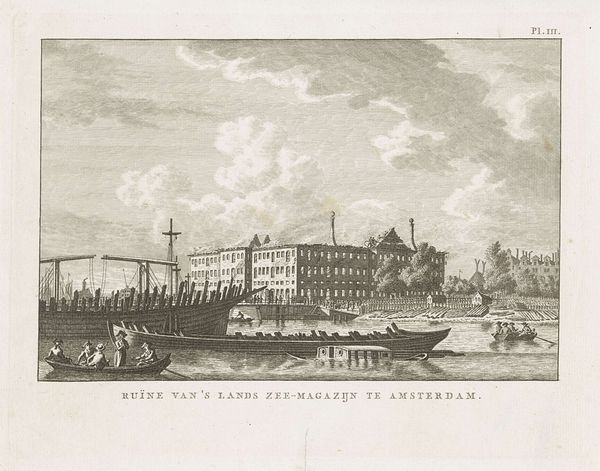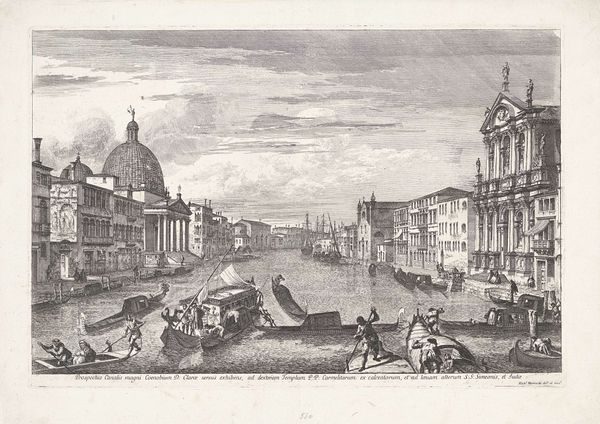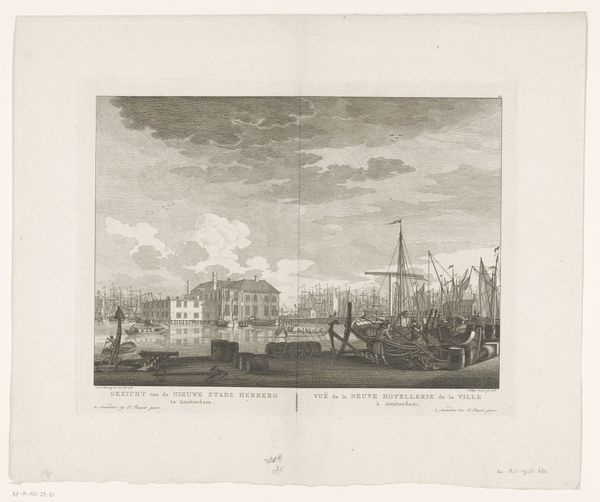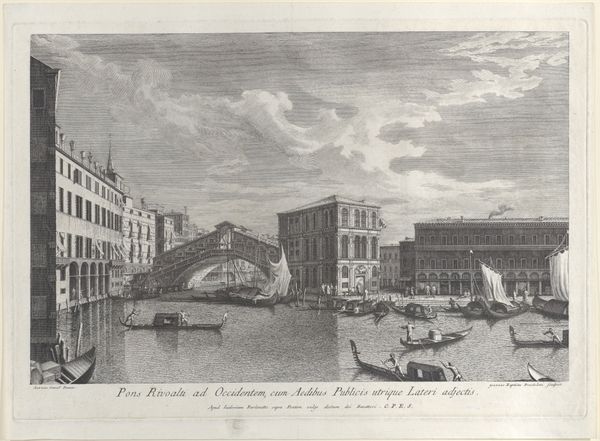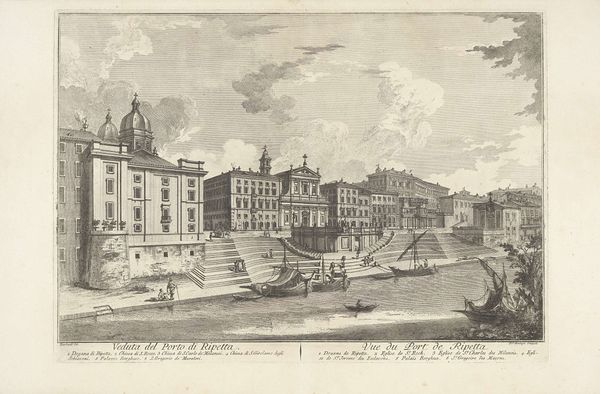
#
pencil drawn
#
photo of handprinted image
#
light pencil work
#
pencil sketch
#
light coloured
#
old engraving style
#
personal sketchbook
#
pen-ink sketch
#
sketchbook drawing
#
pencil work
Dimensions: height 316 mm, width 472 mm
Copyright: Rijks Museum: Open Domain
Curator: Take a moment to observe this captivating scene titled "Canal Grande te Venetië", or Grand Canal in Venice, created in 1741 by Michele Marieschi, currently residing in the Rijksmuseum collection. It's executed as a detailed engraving. Editor: My immediate impression is one of bustling industry and muted tones, creating a serene, yet lively view of everyday life on the canal. The linear details pull me into the composition. Curator: The materiality of engravings is crucial. Here, we see etched lines used to suggest depth and light, facilitated by a labour-intensive process that was integral to the dissemination of images at this time. What societal implications can we glean from this image? Editor: This scene isn't merely a pretty picture. We can interpret its relationship to Venetian power structures and social hierarchies. Consider the details - the figures disembarking near the stairs indicate points of public life. Whose access was granted? Whose was restricted? Curator: Indeed. Moreover, by dissecting Marieschi's approach to image production, it highlights shifts in how artists catered to a burgeoning market of buyers who demanded views like this. Editor: Looking closely, the depiction of transient gondolas juxtaposed with more monumental buildings can spark reflection on issues related to commerce, gender and perhaps class mobility during this period. Curator: Absolutely. The material tells the story of not just the artwork but also the mechanisms by which it became a valuable artifact—its circulation, the economic frameworks—essential to considering this within larger frameworks of art history. Editor: Furthermore, reflecting on accessibility invites further discussions around historical urban planning, environmental consequences, and preservation for communities in Venice impacted even now. Curator: Very interesting thoughts on the larger impact beyond art. In conclusion, studying "Canal Grande te Venetië" compels me to ponder not only artistic creation but also the industry behind visual mediums and those who contributed labor. Editor: Right, viewing this compels contemplation far beyond mere artistic details by highlighting power relations ingrained in how a city presents itself to audiences and its actual citizens across history.
Comments
No comments
Be the first to comment and join the conversation on the ultimate creative platform.

